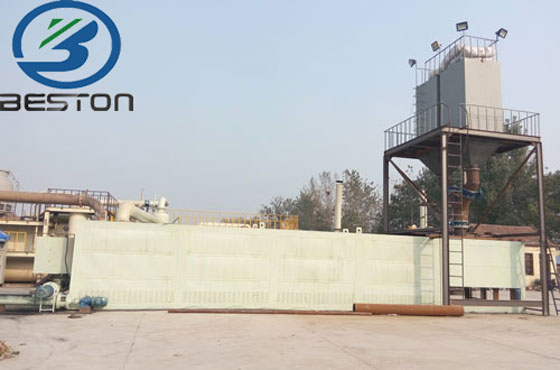The world has a serious garbage problem, so much so, that there is an island in the pacific nearly 100 miles wide of just floating plastics. This is the result of hundreds of countries around the world throwing all kinds of wastes into their streams and rivers, then it all ends up floating in the ocean. Tires are sometimes piled hundreds of feet high and cover nearly a square mile because they’re almost impossible to get rid of. Now there is a new process that’s environmentally friendly that can take all of those tires and turn them into usable products.
What Can A Full Continuous Tyre Pyrolysis Plant Do?
The beauty of pyrolysis is that it doesn’t pollute the air like an incineration plant would. The way that is accomplished is by limiting the amount of oxygen that’s allowed into the reaction chamber where the rubber is broken down into basic ingredients. As long as there is no oxygen there can be no fire.

As the tyres are heated they break down into oil, gas and carbon black. The carbon black can be resold to the tire manufacturing companies to be reused in the tyre making process. The oil will be super heated and first needs to be condensed into a liquid.
After that, it can be used in many industrial plants as a fuel source, or it can be refined into diesel, jet fuel or home heating oil. Most of the fully continuous pyrolysis equipment for tyres use their own oil or gas as a fuel to heat the tires. This makes for an efficient operation that needs very little outside fuels in order to run.
The gases that result from the tire pyrolysis process are a mixture of methane, propane, butane and others, and can be sold to most natural gas companies and easily mixed with their regular gases that are piped to homes and businesses. This gas can also be sold to power generation plants, or sometimes it’s used to generate electricity right on the same site as the pyrolysis plant and used to power other recycling operations.
When Choosing Kingtiger Pyrolysis Plant You Can Pick From Many Sizes Of Batches
The plants are made to be able to handle large quantities of tires in each batch. The have to be done in batches because the heating part of the process is sealed and can’t be opened until done. The plants typically come in 5-ton, 10-ton, 12-ton and even 20-ton capacities for each batch. A 5-ton batch is equal to about 2 X 40 foot loaded containers of tires.
Depending on how many tires you already have on hand, and how many more you plan on receiving each day, you’ll want to make a choice accordingly. It’s best to keep the waste tire pyrolysis plant running steadily throughout the day with a constant flow of tires.
Most Of The Plants Will Separate The Oils Into Different Weights
The top quality plants will divide the different oils into light, medium, and heavy so they can be used for different purposes. Plus, if you have other wastes such as plastics, it’s also possible to purchase a plant that handles both, tyres and plastics so that you can take care of two difficult waste products in one process.
If you have an overabundance of tires, plastics or waste oil, you can use this pyrolysis process to make usable, sellable byproducts that are profitable. If you can also charge for tire disposal, you’ll be able to make an excellent profit while cleaning up waste and helping the planet.